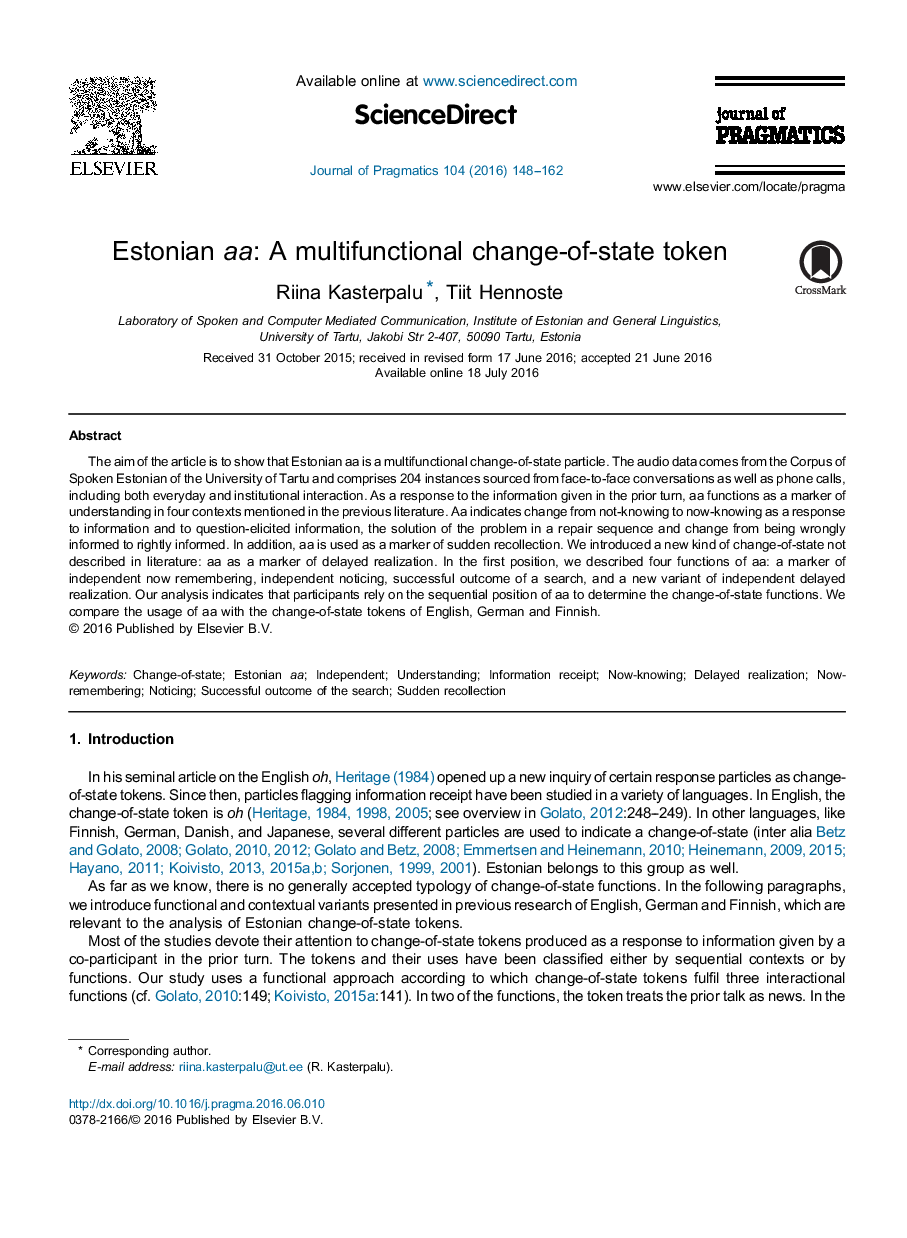| کد مقاله | کد نشریه | سال انتشار | مقاله انگلیسی | نسخه تمام متن |
|---|---|---|---|---|
| 5042819 | 1474696 | 2016 | 15 صفحه PDF | دانلود رایگان |

- Estonian aa claims both information receipt and understanding.
- Estonian aa is used in all sequential positions: the first, second, and third.
- Aa marks an independent change-of-state as well as change due to the previous turn.
- Aa marks revised understanding and sudden recollection, whereas ahah and ahhaa does not.
The aim of the article is to show that Estonian aa is a multifunctional change-of-state particle. The audio data comes from the Corpus of Spoken Estonian of the University of Tartu and comprises 204 instances sourced from face-to-face conversations as well as phone calls, including both everyday and institutional interaction. As a response to the information given in the prior turn, aa functions as a marker of understanding in four contexts mentioned in the previous literature. Aa indicates change from not-knowing to now-knowing as a response to information and to question-elicited information, the solution of the problem in a repair sequence and change from being wrongly informed to rightly informed. In addition, aa is used as a marker of sudden recollection. We introduced a new kind of change-of-state not described in literature: aa as a marker of delayed realization. In the first position, we described four functions of aa: a marker of independent now remembering, independent noticing, successful outcome of a search, and a new variant of independent delayed realization. Our analysis indicates that participants rely on the sequential position of aa to determine the change-of-state functions. We compare the usage of aa with the change-of-state tokens of English, German and Finnish.
Journal: Journal of Pragmatics - Volume 104, October 2016, Pages 148-162